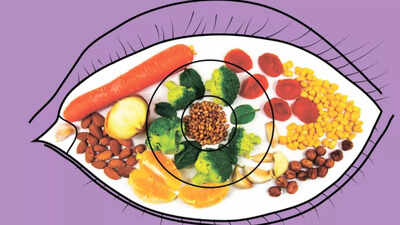She was in peak shape, then a tick bite left her paralysed: What we need to keep in mind when going outdoors

Maria Palen was everything one might imagine when picturing a fitness inspiration. A 31-year-old chemical engineer from California, she followed a clean, plant-based diet, exercised regularly, and even gathered over 20,000 followers on Instagram for her transformation journey. But in a twist no one saw coming, her story shifted from fitness triumph to a health nightmare. After months of unexplained joint pain, swelling, and fatigue, Maria was diagnosed with babesiosis, an infection caused by parasites transmitted through tick bites. By late 2024, she had become paralysed from the waist down.Her journey reminds us that sometimes the body can look perfectly healthy on the outside, but something invisible is quietly waging a war inside. More than a health scare, Maria’s story is a wake-up call about the hidden dangers of tick-borne illnesses, especially for those who love spending time in nature.
What really happened to Maria?
At first, the signs were mild, some inflammation, joint discomfort, and a nagging pain in her thumb. Like many would, she tried to manage it naturally by switching to a cleaner diet and ramping up exercise. But instead of getting better, the symptoms worsened. By March 2024, she was bedridden. Every day tasks like locking a phone or opening a tuna can became a struggle.Eventually, a functional medicine specialist diagnosed her with babesiosis, a lesser-known tick-borne disease caused by Babesia parasites that infect red blood cells. Unlike the more commonly known Lyme disease, babesiosis often goes undetected because its early signs mimic flu or fatigue. According to the Centres for Disease Control and Prevention (CDC), cases of babesiosis have doubled over the last decade, jumping from 1,000 in 2011 to around 2,500 annually today.Maria believes the tick bite may have happened years ago, possibly while hiking outdoors, and went unnoticed. Over time, the infection progressed, eventually affecting her nervous system. By October 2024, she was unable to sit due to extreme tailbone pain. Soon after, paralysis set in.
Not all dangers wear a warning label
Tick bites often go unnoticed. They’re small, painless, and easy to miss. What’s more concerning is how long some infections can lie dormant. Maria’s story is not a case of being careless; it’s a case of how little is known or spoken about lesser-known tick-borne diseases like babesiosis.Ticks are most active in warmer months and tend to thrive in grassy or wooded areas. The 2024 tick season in the US was one of the worst in recent memory, as milder winters led to more animals surviving, especially those that serve as hosts to ticks. According to researchers at the University of California, Riverside, this rise in tick populations also increases the risk of rare infections spreading quietly.The microbes that cause babesiosis (Babesia microti and B. duncani) are tricky to detect because they hide inside red blood cells. Recent research decoding the genome of B. duncani even shows it behaves similarly to the parasite behind malaria, explaining why symptoms can include fever, chills, and muscle aches before turning severe.

(Pic courtesy: iStock)
Lessons from Maria’s experience that can’t be ignored
What stands out about Maria’s story is not just the tragedy, but her resilience. Despite eight hours of therapy every week, she remains hopeful about regaining sensation in her legs. But her experience underlines something crucial: Early detection can make all the difference.Doctors often test for Lyme disease when tick-borne illness is suspected, but babesiosis is not always on their radar. And since it can coexist with Lyme, symptoms may be wrongly attributed. That’s why it’s vital for healthcare providers to broaden their approach and for individuals to track any unexplained changes in energy, muscle strength, or chronic pain, especially after spending time outdoors.And it’s not just about hiking or camping. Even gardening in overgrown backyards or walking through wooded areas can pose risks, especially when protective clothing or tick repellents are not used.
Real precautions that matter, beyond the basics
Most lists mention “wear long sleeves” or “check for ticks.” But Maria’s case urges a deeper look:
- Clothing isn’t just a barrier, it’s a tool. Opting for light-coloured clothes can help spot ticks faster. Also, tucking pants into socks is not just a strange fashion tip, it creates a physical barrier from ground-level brush where ticks often lurk.
- Routine checks must include overlooked areas. Ticks love warm, hidden places, behind ears, under arms, behind knees, along the hairline, and even between toes.
- Not all repellents are created equal. The CDC recommends using EPA-registered repellents with DEET, picaridin, or oil of lemon eucalyptus. Natural alternatives like citronella may smell nice, but they’re often ineffective against disease-carrying ticks.
- Outdoor wear deserves a separate space. Clothes worn in forested or grassy areas should be removed immediately upon entering the house and washed in hot water. Ticks can survive on fabrics and hitchhike into beds and sofas.
- Never ignore unexplained fatigue, swelling, or recurring body pain. These signs may not be “just stress” or “overexertion.” If they linger, blood tests can help identify hidden infections early.
[This article is intended for informational purposes only and is not a substitute for professional medical advice. For any symptoms or health concerns, please consult a licensed healthcare provider]







